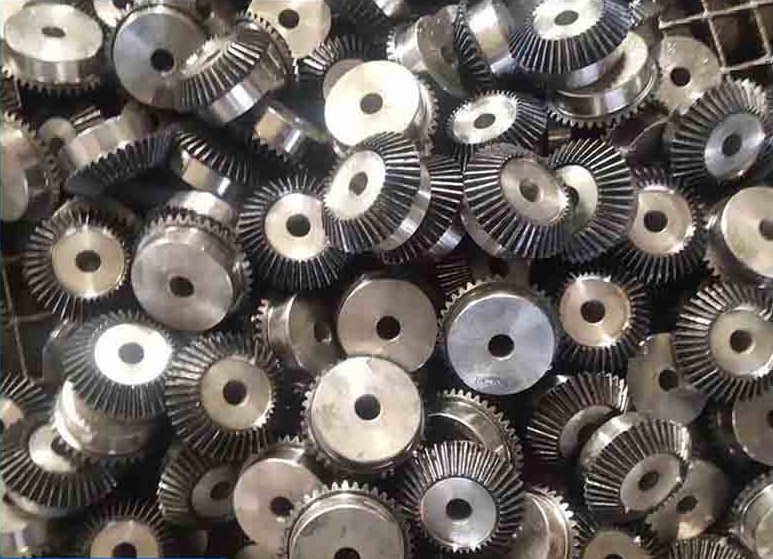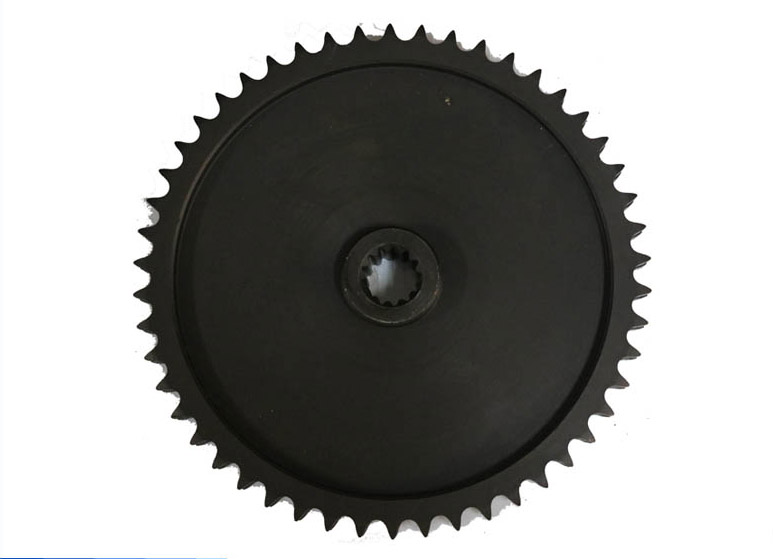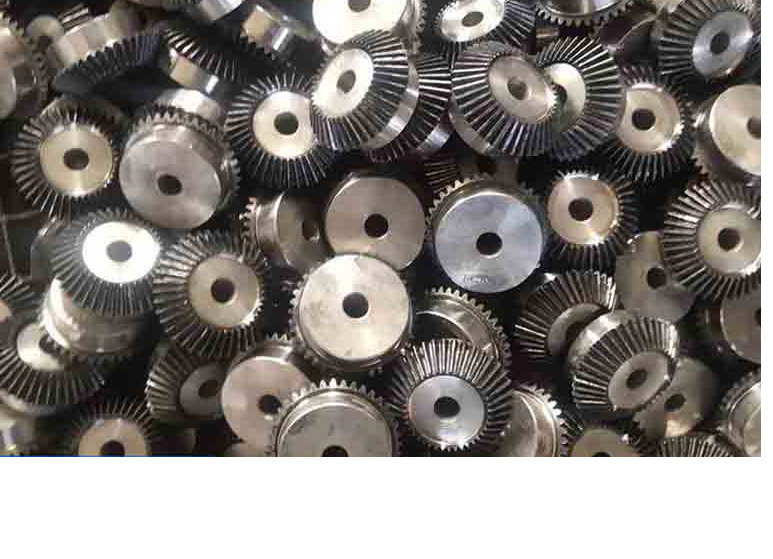The tooth profile of gear processing includes tooth profile curve, pressure angle, tooth height and displacement.Involute gears are easy to manufacture, so involute gears account for the vast majority of modern gears, and cycloid gears andArc gearrarely use.
Under the pressure angle, the load-bearing capacity of the gear with a small pressure angle is smaller.Gears with large pressure angles have high load-bearing capacity, but under the same transmission torque, the bearing load will increase, so it can only be used in special circumstances.The tooth height of the gear is standardized, and the standard tooth height is usually used.Gear displacement has many advantages, and these advantages have spread to various mechanical equipment.
In addition, gear processing can be divided into cylindrical gears, helical gears, non-circular gears, rack gears and worm gears according to their shapes.According to the tooth shape can be divided intoSpur gear,Bevel gear, Herringbone gears and curved gears.According to the tooth surface, it is divided into external gear and internal gear.According to different manufacturing methods, it can be divided into casting gears, cutting gears, rolling gears, sintered gears, etc.
The manufacturing material and heat treatment process of the gear have a great influence on the bearing capacity, size and weight of the gear. Before the 20s, carbon steel was commonly used for gears, alloy steel was commonly used in the 50s, and case hardened steel was commonly used in the 60s.According to the hardness, the tooth flank can be divided into soft tooth flank and hard tooth flank.
Gears with softer tooth surfaces have lower load-bearing capacity, but gear manufacturers are easy to manufacture and have good running performance.They have no strict restrictions on the transmission size and weight, and are mostly used in ordinary machines with small production volumes.The pinion gear has a heavier burden on the matching gear, so the working life of the pinion gear is roughly the same, and the hardness of the pinion gear is generally higher than that of the large wheel.
Hardened gears have high load carrying capacity.After cutting, the gear is quenched, surface quenched or carburized and quenched to increase its hardness.However, the gear will inevitably be deformed during the heat treatment, so after the heat treatment, grinding, grinding or fine-tuning should be carried out to eliminate the error caused by the deformation and improve the accuracy of the gear.
Gear processing The steel commonly used to manufacture gears includes trim steel, hardened steel, carburized hardened steel, and nitrided steel.The strength of cast steel is slightly lower than that of forged steel, which is often used for larger gears.Gray cast iron has poor mechanical properties and can be used for light-load open gear transmission.Nodular cast iron can partially replace steel to make gears.Plastic gears are often used in places where the light is brighter and the noise is low, and the gears that match them generally use steel gears with better thermal conductivity.
The development of gear manufacturing technology by gear manufacturers will lay the foundation for further research on gear damage mechanism, establishment of reliable strength calculation methods, improvement of gear carrying capacity and extension of gear life.Develop a new tooth profile represented by a circular tooth profile.Research new gear materials and gear manufacturing technology.The elastic deformation, manufacturing and installation errors and temperature field distribution of the gear are studied, and the gear teeth are improved to increase the flexibility of the gear teeth, increase the contact area of the gear teeth at full load, and improve the load-bearing capacity of the gear.Friction, lubrication theory and lubrication technology are the basic work of gear research.Researching the theory of elastohydrodynamic lubrication, introducing synthetic lubricating oil, and adding extreme pressure additives to the oil can not only improve the bearing capacity of the tooth surface, but also improve the transmission efficiency.

 Home
Home
 Page location:
Page location:
 contact address:Jianyang Industrial Concentration Zone, Jianhu County
contact address:Jianyang Industrial Concentration Zone, Jianhu County


